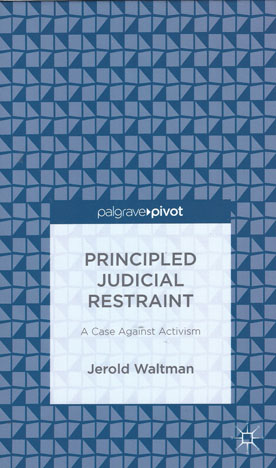
Many Americans believe that judicial activism is standard procedure on the modern Supreme Court. Political scientist Jerold Waltman asserts that justices routinely call for restraint when they disagree with specific majority decisions, but they then blithely abandon that position when it suits their purposes.
Such calls for restraint are therefore unprincipled. In response, many people have argued that the Court should adopt a more restrained posture across the board, usually appealing to one of two ideas: the inherently undemocratic character of the Supreme Court or the likelihood that the Court is damaging its legitimacy by wading into so many controversial political issues.
This book contends that what is sorely needed is a revised-actually a resurrected-constitutional theory that will delegitimize activism, or at least most of it, whether of the liberal or conservative variety.